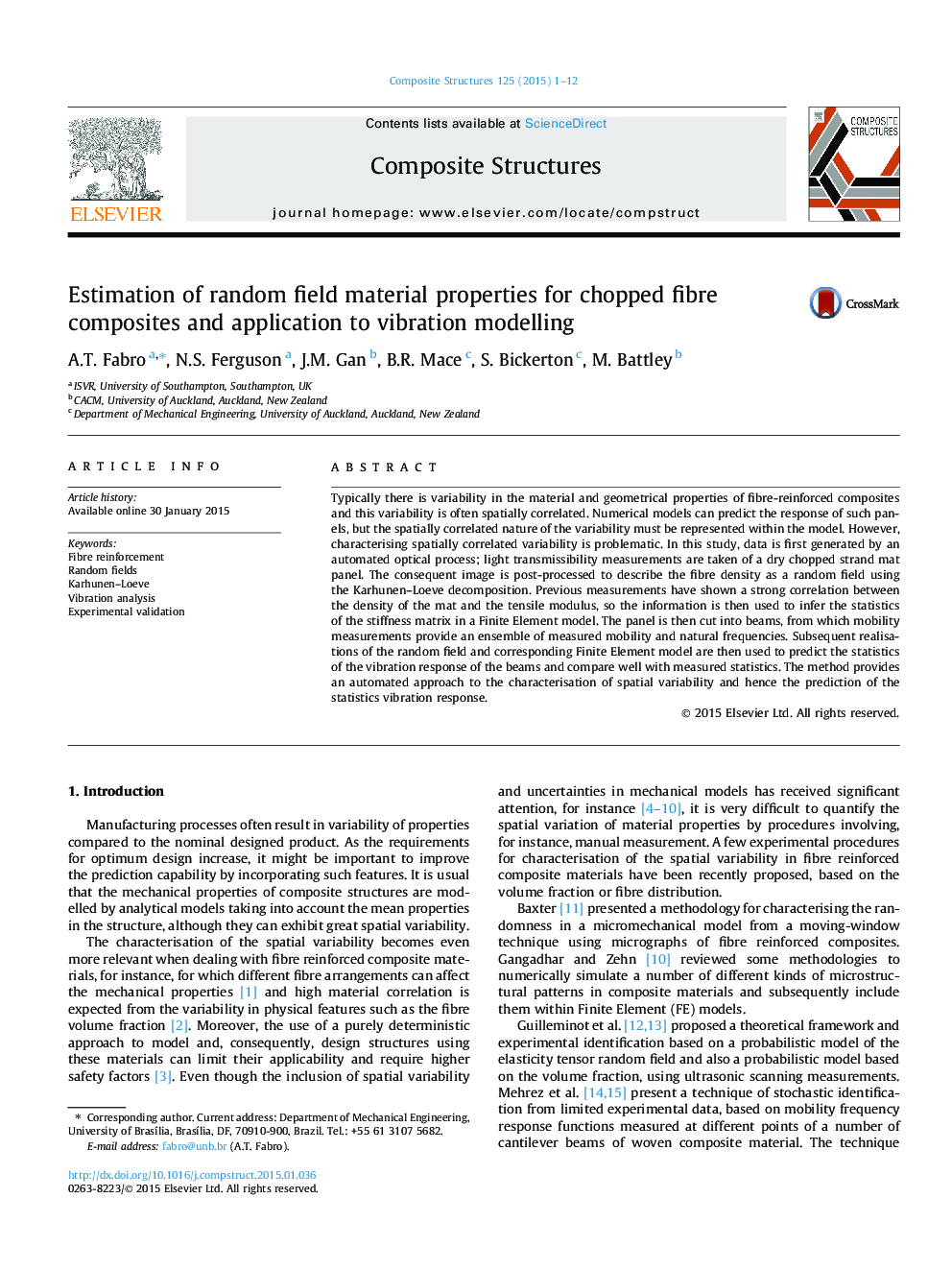| Article ID | Journal | Published Year | Pages | File Type |
|---|---|---|---|---|
| 6706795 | Composite Structures | 2015 | 12 Pages |
Abstract
Typically there is variability in the material and geometrical properties of fibre-reinforced composites and this variability is often spatially correlated. Numerical models can predict the response of such panels, but the spatially correlated nature of the variability must be represented within the model. However, characterising spatially correlated variability is problematic. In this study, data is first generated by an automated optical process; light transmissibility measurements are taken of a dry chopped strand mat panel. The consequent image is post-processed to describe the fibre density as a random field using the Karhunen-Loeve decomposition. Previous measurements have shown a strong correlation between the density of the mat and the tensile modulus, so the information is then used to infer the statistics of the stiffness matrix in a Finite Element model. The panel is then cut into beams, from which mobility measurements provide an ensemble of measured mobility and natural frequencies. Subsequent realisations of the random field and corresponding Finite Element model are then used to predict the statistics of the vibration response of the beams and compare well with measured statistics. The method provides an automated approach to the characterisation of spatial variability and hence the prediction of the statistics vibration response.
Related Topics
Physical Sciences and Engineering
Engineering
Civil and Structural Engineering
Authors
A.T. Fabro, N.S. Ferguson, J.M. Gan, B.R. Mace, S. Bickerton, M. Battley,
